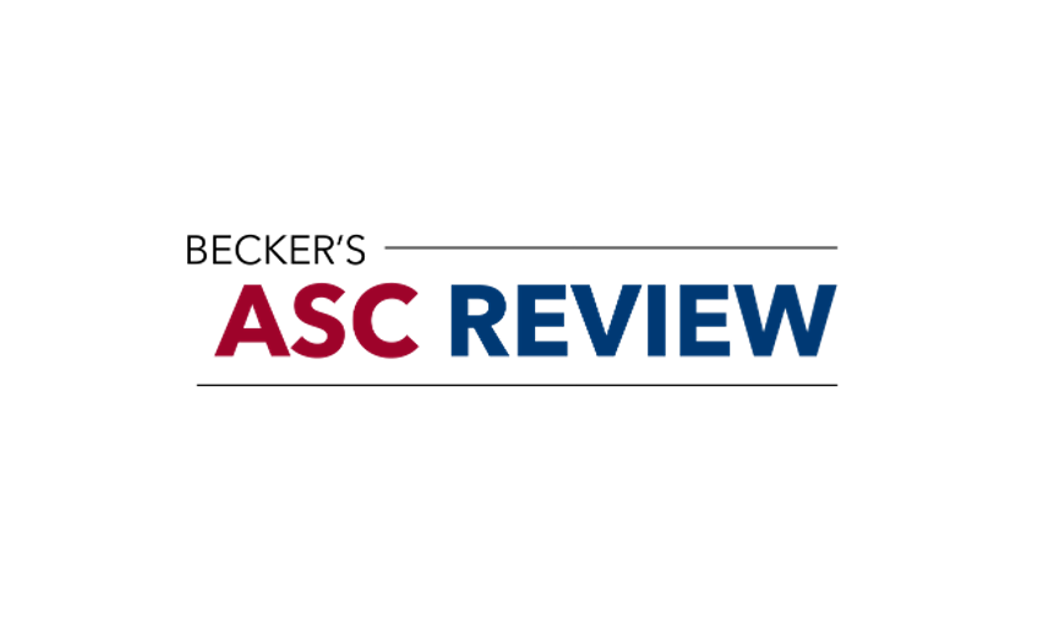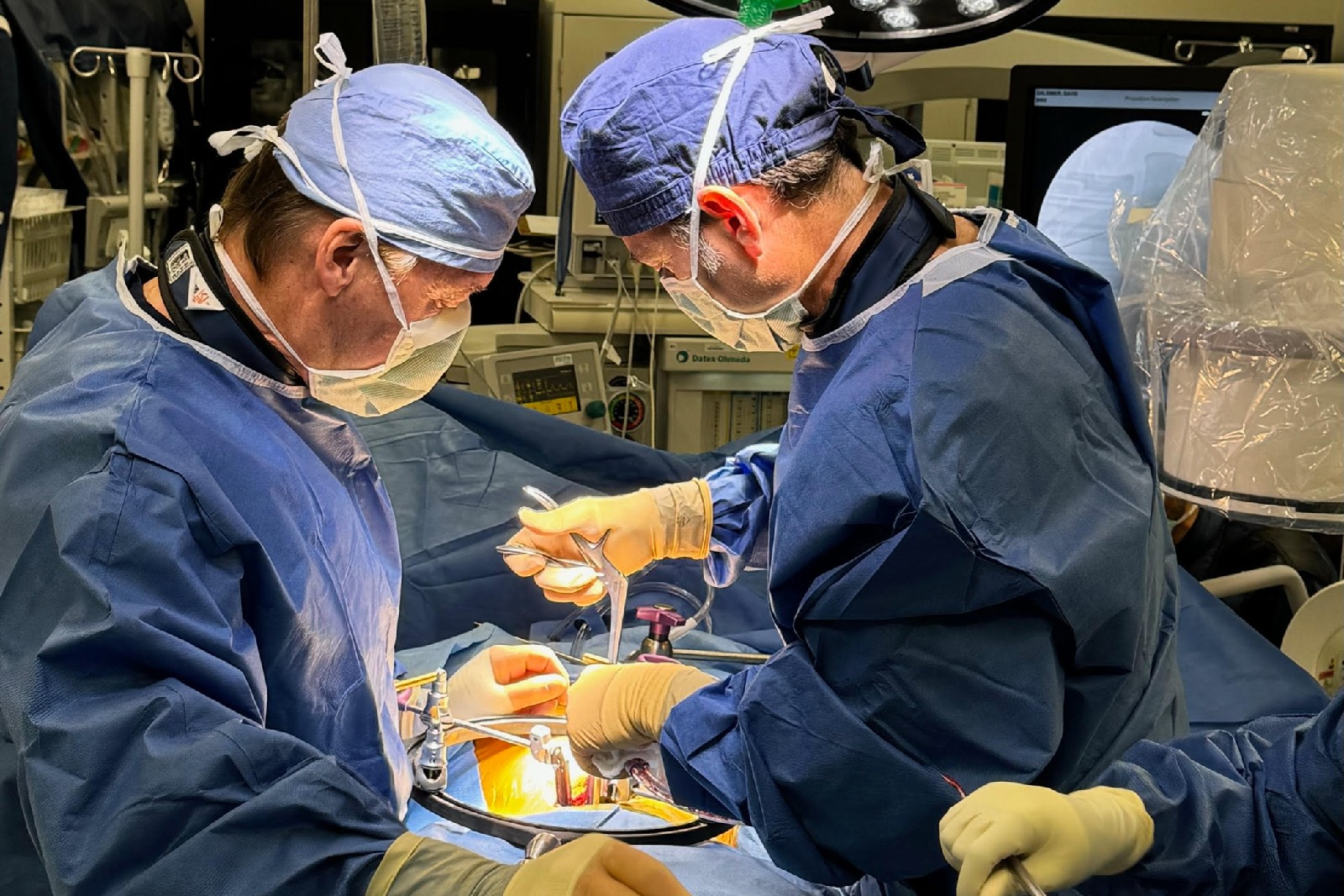Artificial Disc Replacement Timeline & Recovery

An artificial disc replacement (ADR), also known as total disc replacement (TDR) or total disc arthroplasty (TDA) surgery involves the replacing of a worn or degenerated disc with an artificial disc made of metal and/or plastic.
As we age, the intervertebral discs in our spines begin to wear, causing chronic neck and back pain. Surgeons have been successfully performing artificial disc replacement surgeries in the US over the past two decades. Many devices that can be implanted when replacing damaged or degenerative discs are FDA approved. By replacing the disc with an artificial one, strength, movement and alignment are restored to the spine. Palm Beach County is home to some of the best hospitals and facilities for spinal care in the nation, and is leading the industry with some of the most innovative spinal surgeons including Dr. Jason M. Cuéllar.
Cuéllar Spine offers patients the expertise and personalized care needed when considering artificial disc replacement surgery and/or a total disc arthroplasty. This highly specialized procedure requires the knowledge and experience that only a dedicated surgeon like Dr. Jason M. Cuéllar, M.D. can provide.
Understanding Artificial Disc Replacement
The movements we take over the course of our lives have an impact on our overall spinal health – how we lift, twist, bend, and pull. Because of these repeated motions, the discs in our spines begin to wear over time. It is important to address the discs that are no longer functioning as they once did, as they can place undue stress on other segments or regions of the spine, and the most common way to achieve this is through an artificial disc replacement surgery (ADR). During this procedure, an artificial disc is inserted in place of a degenerative or damaged one. ADR can be used to treat a wide range of spinal conditions and leaves a positive, long-lasting impact on the overall health of the spine.
One of the most important things that a spinal surgery can achieve is restoring and maintaining the range of motion that a patient has in the spine. ADR allows patients to retain natural movement in their spines as a single disc is replaced instead of fused to another. This minimally invasive surgery also allows for patients to recover more quickly than traditional treatments.
Benefits of ADR: Brief Overview
Spinal fusion is a traditional treatment for patients who suffer from chronic back and neck pain due to a damaged or diseased intervertebral disc. Unlike spinal fusion, ADR has the benefit of allowing for greater flexibility in the spine, as well as faster recovery time. For more information on the additional benefits of ADR, visit our main ADR page.
Meet Dr. Jason Cuéllar, Palm Beach County Spine Surgeon
Dr. Jason M. Cuéllar, M.D., is a board-certified, fellowship-trained orthopaedic spine surgeon who specializes in treating spinal disorders in South Florida. Dr. Cuéllar provides patients with both non-operative treatments, such as regenerative medicine and injections of a novel biologic therapy for osteoarthritis, as well as artificial disc replacement surgery.
Dr. Jason M. Cuéllar, M.D., is a highly specialized spinal surgeon. Following receiving his Ph.D. at U.C. Davis, he attended Stanford Medical School. Dr. Cuéllar has been studying spinal conditions alongside pain research for over two decades – in fact, throughout medical school, he worked in a pain research laboratory, completing his post-doctoral research and a year as a medical scholar’s research fellow. While in school, Dr. Cuéllar dealt with his own chronic back pain and underwent multiple treatment options before turning to ADR himself. Because of this personal journey, Dr. Cuéllar has become more in tune with the needs of patients seeking ADR, and he works closely with patients and other care providers to provide a holistic and multidisciplinary approach for each patient. He has performed many successful ADR surgeries and is an award-winning surgeon.
Dr. Jason M. Cuéllar, M.D., is affiliated with Jupiter Medical Center, JFK North hospital in West Palm Beach, and Aventura Hospital in Miami. He is an active member of the North American Spine Society (NASS), the International Society for Advancement of Spine Surgery (ISASS) and is a fellow of the American Academy of Orthopaedic Surgeons (AAOS).
Why Dr. Cuéllar recommends ADR:
Dr. Jason M. Cuéllar, M.D., has one main goal: to get his patients back to the active lifestyle they enjoy. By pursuing a total disc replacement, patients are investing in the future of their spinal health. An artificial disc replacement maintains the integrity of the natural movement in the spine while replacing a damaged or diseased disc with an artificial one. This safe, minimally invasive procedure, allows patients to enjoy a return of movement, strength and flexibility in the spine, which invites a return to a quality of life that is pain-free.
Artificial Disc Replacement Procedure
ADR aims to relieve chronic back and/or neck pain. An ADR procedure takes place over a series of steps. After an initial consultation, patients complete a series of diagnostic tests (including imaging) that provide our medical team with enough information to make a robust assessment. This assessment will help to create a clear picture as to what needs to be done in order to address your pain.
Next, depending on your lifestyle, you may need to make some adjustments, such as: making dietary changes and quitting smoking and drinking. You will also need to use this time to prepare for your care post-surgery. You will need to coordinate transportation home after surgery as well as to and from follow-up appointments. Organizing other support systems ahead of time – for meal preparation, child and pet care, and housework, for example – are important as you will likely be put on lift restrictions after surgery. It is also likely you will need to speak with your employer about taking time off to allow your body to recover.
An ADR procedure takes place over several steps.
- First, your surgeon will administer general anesthesia (either through an IV or through vapors you breathe).
- Once you are sedated, the doctor will make an initial incision either in the neck (for a cervical disc replacement) or in your abdomen (for a lumbar disc replacement). The anterior approach is currently the only option due to anatomy.
- Next, a microscope will be used for cervical surgery.
- The damaged disc will be identified, removed, and replaced with an artificial one.
Once the disc is replaced, the surgeon will confirm optimal implant placement using fluoroscopy and then close up the incision.
How long does the ADR surgery itself typically take?
The procedure takes Dr. Cuéllar one hour per level on average but this can vary depending on various patient factors.
Disc Replacement Recovery Timeline
Immediate Post-Surgery
During the first phase of recovery, your doctor will run a series of tests post-surgery. You will be monitored for several hours and given medication for pain management. You will be able and expected to walk on the same day of your surgery. Most procedures are performed in an ambulatory surgery center, enabling you to go home (or to a hotel if you are from out of town) the same day.
Weeks 1-2
The healing that takes place within the first two weeks post-surgery are crucial. During weeks 2-3, your incision should be fully healed and you should begin to see a return to normal mobility. Patients can expect to be able to start to walk more normally and to taper off of pain medications until around week 1-2.
Months 1-3
Between months 1-3 following your surgery, progress may feel as though it ebbs and flows. Although you should be able to drive a car and return to work (if a non-physical job), returning to a more physical job may not be possible. You will have your first post-op X-Ray at 2-4 weeks, post-surgery. Most patients experience approximately 75% pain relief at about 6 weeks from surgery and about 90% pain relief by about 3 months.
Long-Term Recovery
At approximately 3-4 months, healing should be nearly complete. Most patients can return to normal activities by this time but it does depend on your health, the specifics of the operation and your dedication to your physical therapy exercises.
When can I expect to see initial improvements in my condition after ADR surgery?
Although patients should be walking on day 1, most patients are able to return to work (for a non-physical job) by week 3-4, which is around the time patients can see initial improvements in their condition after ADR surgery. Most patients experience approximately 75% pain relief at about 6 weeks from surgery and about 90% pain relief by about 3 months.
Physical Therapy and Rehabilitation following ADR
Fully committing to exercise and rehabilitation programs are a crucial component to your ADR recovery progress. Your spinal health impacts every movement your body makes – keeping your spine strong is one of the best things you can do to experience a full and successful ADR recovery.
There are a number of physical therapy studios located in and around the Palm Beach area. Our staff can share a list of referrals with you and assist you in finding the right facility to meet your post-surgery recovery needs.
Managing Pain and Discomfort During Recovery
Your doctor will prescribe pain medication to help manage the initial period following your surgery, and to reduce swelling in the body, however, your recovery may require additional steps to address any discomfort. Some non-pharmacological methods for treating pain include: icing, continued gentle exercise, maintaining a healthy diet and regularly doing physical therapy exercises.
We offer a series of post-operative packets specific to your treatment plan, including pdfs of “Post-Op Instructions” related to your surgery. These packets include daily rehabilitation exercises starting with week 1 through week 12 of your surgery.
ADR is the most popular, safe and effective treatment for patients suffering from chronic back and neck pain caused by degenerative or diseased intervertebral spinal discs. ADR allows patients to have flexibility, strength and stability restored to their spines, and provides relief from chronic back and neck pain. Overall complication rates are low for ADR, though there are risks associated with spine surgery. Most patients recover from the procedure within 6-12 weeks. Artificial discs are predicted to last more than 70 years.
Most ADR procedures are complete within a mere matter of hours and the full recovery period for most patients is around 6-12 weeks.
Many – but not all – patients are candidates for ADR. The main factor pointing to whether or not you are a candidate for this surgery is if you suffer from degenerative disease that may or may not accompany radicular pain – which is caused by compression or inflammation of nerves in the spine. To be a candidate, a patient’s neck or back pain usually interferes with their ability to work or pursue active hobbies or sports. There are a variety of issues which can exclude you as a safe ADR candidate. Schedule a consultation with our team today and learn whether ADR is right for you.
FAQs:
What is the typical or average recovery time for ADR?
Although patients should be walking on day 1, most patients are able to return to work (for a non-physical job) by week 3-4, which is around the time patients can see initial improvements in their condition after ADR surgery. Most patients experience approximately 75% pain relief at about 6 weeks from surgery and about 90% pain relief by about 3 months.
When can I expect to see initial improvements in my condition after ADR surgery?
Some patients feel some improvement from preop pain immediately. Most patients experience approximately 75% pain relief at about 6 weeks from surgery and about 90% pain relief by about 3 months.
Are there any restrictions on physical activities during the recovery period?
In the days following your surgery, you should limit your movement and follow instructions from your doctor about how often you should walk and when to expect to resume normal activities. Patients are also usually put on a weight restriction, to not lift more than five pounds at a time (approximately the weight of a sack of flour) initially.
How can I minimize the risk of complications after ADR surgery in Palm Beach County?
By organizing support care for your recovery within your community in Palm Beach County, during your recovery period post-surgery, you should be able to reduce risk of injury. Having someone assist you with childcare, meal planning and prep, as well as household chores, will help you to maintain your lift and movement restrictions during this crucial healing period.
What should I expect during my first postoperative follow-up appointment?
During your first post-op appointment, your doctor will take X-rays to review your ADR implant, and examine your incision. Your doctor will also discuss your pain levels with you and set any follow-up appointments.
Is ADR covered by insurance in the USA?
Several major health insurance companies cover a substantial portion of the cost of artificial disc replacement. Some health insurance companies that cover artificial disc replacement include: Anthem, Cigna, Humana and UnitedHealthCare. Medicare does cover cervical ADR. In all cases, however, patients must meet certain requirements to be eligible for coverage. People who are considering artificial disc replacement surgery should speak with their Palm Beach County spine surgeon and/or health insurer to find out if and what artificial disc replacement surgery costs are covered.
What is the long-term recovery timeline after artificial disc replacement?
The recovery process after disc replacement surgery involves a gradual return to normal activities, pain management and close monitoring by your medical team. Adhering to your surgeon’s instructions (and allowing your body the time it needs to heal) is key to a successful recovery and the best possible outcome. Although most patients recover from the procedure within 6-12 weeks, patients can expect to resume light activities within one week. It can take 3-4 months for patients to reach their full activity levels.
More News & Insights from Cuéllar Spine
Exploring the Success Rates and Benefits of Laminectomy Without Fusion Surgery
Lumbar disc replacement surgery offers a promising alternative to traditional treatments for debilitating back pain and limited mobilit
The State of Outpatient Spine Surgery in 4 Studies
Outpatient spine surgery is growing, and its outlook suggests the trend will likely continue. Here are four studies illustrating the st
The Pros and Cons of Lumbar Disc Replacement (Also known as Total Disc Replacement (TDR), Total Disc Arthroplasty (TDA), or Artificial Disc Replacement (ADR))
Lumbar disc replacement surgery offers a promising alternative to traditional treatments for debilitating back pain and limited mobilit
10 Signs You May Need Revision Spine Surgery
Revision spine surgery, also known as secondary spine surgery, plays a crucial role in addressing persistent or recurrent spinal condit
Lumbar Total Disk Replacement Device Removals and Revisions Performed During a 20-Year Experience with 2141 Patients
This was a retrospective study with prospective patient contact attempted to collect current data.
36-Year-Old Male with History of Neck Pain
36-Year-Old Male with History of Neck Pain Radiating Into Both Shoulders, Numbness in Radial 3 Fingers of Both Hands
Problems with Artificial Disc Replacement
Artificial disc replacement (ADR), also known as total disc replacement (TDR), has emerged as a revolutionary approach in the field of
Top 5 Ways a Spinal Surgeon Can Help with Neck Pain
It is easy to take the movement in our necks for granted - and yet, when we are in pain, our neck flexibility can become extremely limi
ADR Spine Announces the Inclusion of Four Surgeons to Its National Top Doctors in Arthroplasty Program
ADR Spine Welcomes Elite Physicians to Top Doctors in Arthroplasty Program










